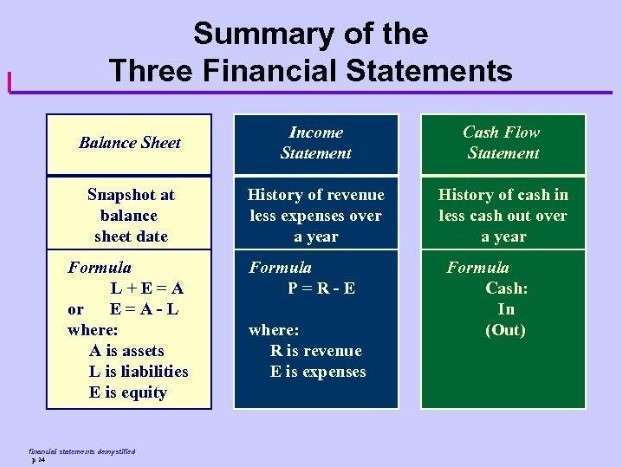
By accurately recording transactions, businesses can track their financial activities, analyze their performance, and make informed decisions. Precise recording has a direct impact on the preparation of financial statements, ensuring that they reflect the true financial position and operating results of the organization. Investors rely on accrual accounting to assess the true financial performance of a company. This accounting method ensures that income statements reflect the revenues earned and the expenses incurred during a period, offering an accurate picture of profitability. It informs investors not just about the cash flows but also about the earning power of the enterprise, strengthening trust and transparency in investor communications.
Accrual vs. Cash Basis Accounting
After closing all the books at the end of a financial year, every business starts its new books at the beginning of each year. Closing balances of all the accounts are carried forward to the new year as opening balances. As it is the first entry in the new financial year, it is called Opening Journal Entry. Particulars− Details of business transactions like, name of the parties involved and the name of related accounts, are recorded. However, the non-monetary events are not recorded in accounts; for example, promotion of manger cannot be recorded but increment in salary can be recorded at the time when salary is paid or due.

Principles of Financial Accounting
Similarly, an accrual basis company will record an expense as incurred, while a cash basis company would instead wait to pay its supplier before recording the expense. Accrual accounting does not adopt the cash basis of accounting because revenues and expenses are recognized on accrual as earned or recording transactions in a journal incurred, rather than the date at which cash is exchanged. The most fundamental method of recording financial transactions is the cash basis of accounting. Here, the revenues are recognized only when cash is received as well as expenses when paid in cash. Thus, no transaction would be recorded while a sale is made or a bill is received unless there were actual changes in cash. It is mostly applied in small businesses as well as to sole proprietors, which gives it a great deal of simplicity though not reflecting an accurate financial position.

What key concepts should be understood to effectively implement accrial basis accounting?
Omitting transactions can lead to incomplete financial records and misrepresentation of an organization’s financial position, potentially impacting decision-making and financial reporting. Cash transactions involve the exchange of money for goods or services and are recorded to reflect the inflow or outflow of cash from the organization, impacting its financial position and liquidity. The entry details, including dates, amounts, accounts affected, and descriptions, provide a comprehensive trail of the transaction, facilitating effective financial reporting and analysis. By adhering to the prescribed financial reporting standards, organizations can enhance transparency, comparability, and reliability in their financial records. The transactions can be represented in a bank column cash book as shown below.
Question 2. Should a transaction be first recorded in a journal or ledger? Why?
Precision in identifying transactions is crucial for providing reliable financial information to stakeholders and for adhering to accounting standards and regulations. Enter the following transactions in the sales (journal) book of M/s. From the above question, we see that Gupta Traders deals with stationery. On 23rd July, the purchase of furniture is toward the use of the company and hence, will not be considered as an entry in purchase book. After five years, the firm will have generated Rs. 1,50,000 and distributed Rs. 50,000, leaving a balance of Rs. 1,00,000 representing the original capital, which may be returned to the owners, or reinvested.
Debits and Credits
This method is simpler than the accrual basis of accounting since it only captures the actual cash flowing in and out of the business, making it easier to understand for small businesses and individuals. It may not provide a clear picture of the company’s financial health since it does not consider accounts receivable, accounts payable, or inventory. The accrual basis requires the use of estimates in certain areas. For example, a company should record an expense for estimated bad debts that have not yet been incurred.
Individuals or entities that carry out the bookkeeping process are known as bookkeepers. The bookkeepers are responsible for classifying, recording and organising every financial transaction made in the course of the business operations. So, you record a single transaction, but it affects at least two accounts. The accrual method also typically sees more transactions in the account ledger because it uses more accounts. Accrual basis of accounting is one of the two methods of accounting, the other method being the cash basis of accounting. Accrual basis of accounting is a slightly more complex process of recording of transactions.
Journals and Ledgers
It is based on the concept that transactions are recorded as and when they occur. In other words, businesses that follow the accrual basis of accounting need to record revenues and expenses when a transaction occurs regardless of when payment for the same is received or made. When recording accounting transactions, the double-entry method is a system bookkeeping where every entry to an account requires an opposite entry to a different account producing balanced journal entries. The double-sided journal Bookkeeping for Consultants entry comprises two equal and corresponding sides, known as a debit (left) and a credit (right). It will ensure that total debits will always equal total credits. With financial transactions properly recorded, bookkeepers can then prepare key financial statements.
- Financial accounting guidance dictates how a company records cash, values assets, and reports debt.
- This statement provides a clear view of the company’s operational efficiency by showcasing the financial results of its activities, which can include sales figures and cost of goods sold.
- In advanced bookkeeping, a practitioner goes beyond basic transaction recording to implement strategies for detailed financial tracking and analysis.
- When assessing a company’s financial health, accrual accounting offers a more comprehensive view than cash basis accounting.
- In a double-entry mechanism, every transaction impacts and gets recorded in two accounts.
If you’re disciplined, you’ll prepare yourself to study even if you don’t feel like doing so. Stick to your schedule regardless of all the distractions around you and that’s the key to success. Hence, students shall try their level best to be disciplined at all times to be able to move forward and not let any hurdle stop them time and again. A good student not only acquires the important topics, instead they choose to know assets = liabilities + equity problems of every type. Conceptual understanding is really important and that can only be attained by solving multiple questions and not just of one type, but rather questions of all types. This opens up your mind and prepares it to work with a broader aspect, hence polishing the concepts even more.


